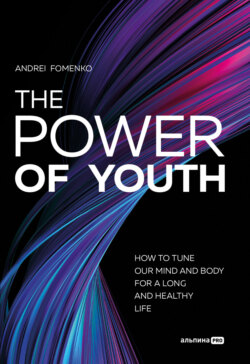Читать книгу The Power Of Youth. How To Tune Our Mind And Body For A Long And Healthy Life - Андрей Фоменко - Страница 12
CHAPTER 2
GENETICS
OUR GENETIC CODE
ОглавлениеDeoxyribonucleic acid (DNA), which is found inside the nucleus of every cell, holds the information that makes an organism what it is. To understand what it looks like, you can imagine a zipper twisted into a spiral. This long spiral chain, consisting of two strands, is constructed of four blocks called nucleotides: adenine – A, cytosine – C, guanine – G, and thymine – T. The entire DNA "text" consists of about six billion "letters" and contains "instructions" for the construction of every cell in our body. Each of the nucleotides has a pair from another strand, to which it is joined by hydrogen bonds. Adenine will always be paired with thymine and cytosine with guanine.
Regions of nucleotide sequences are called genes. The set of genes received at birth is the genotype, and all hereditary material contained in a cell is called a genome.
Proteins are the levers by which DNA controls the body. They are necessary for various biochemical reactions (as catalysts), metabolism, digestion, wound healing, etc. – for all the complex physiological interaction that ensures the health and life of the body. Proteins are formed during gene expression, the conversion of the hereditary information located in genes.
Expression occurs in several stages, but the key ones are transcription and translation. When the cell needs a certain protein – the transcription starts, i.e., the sequence of nucleotides in the right part of the DNA is copied into the ribonucleic acid (RNA). These RNA copies of DNA fragments act as matrices for protein synthesis – the translation starts.
The information flow in cells is directed from DNA to RNA, from RNA to protein – this is the central dogma of molecular biology.
The global Human Genome Project, completed in 2003, found that there are about 22,000 genes encoding proteins in human cells. Quite interesting, because before it was supposed to be at least 100 thousand. But it turned out that humans do not need so many genes, because each of them can perform several functions at once and synthesize several protein variants.
Except for the coding DNA, there is also non-coding DNA in the cell – the one that does not synthesize proteins. It makes up about 98 % of all human DNA. It is often called "junk DNA," because it is not yet fully understood exactly what functional activity non-coding DNA has. However, despite its name, it is also important for the life of the organism, and part of it plays a role in epigenetic (remember this word) regulation.
It can be said that genes are essentially eternal. Each of the DNA molecules can control its reproduction: copy itself and continue to exist for millions of years. But genes can change – various conditions affect them – and human health depends on these changes (mutations) because they are the root cause of many diseases.
